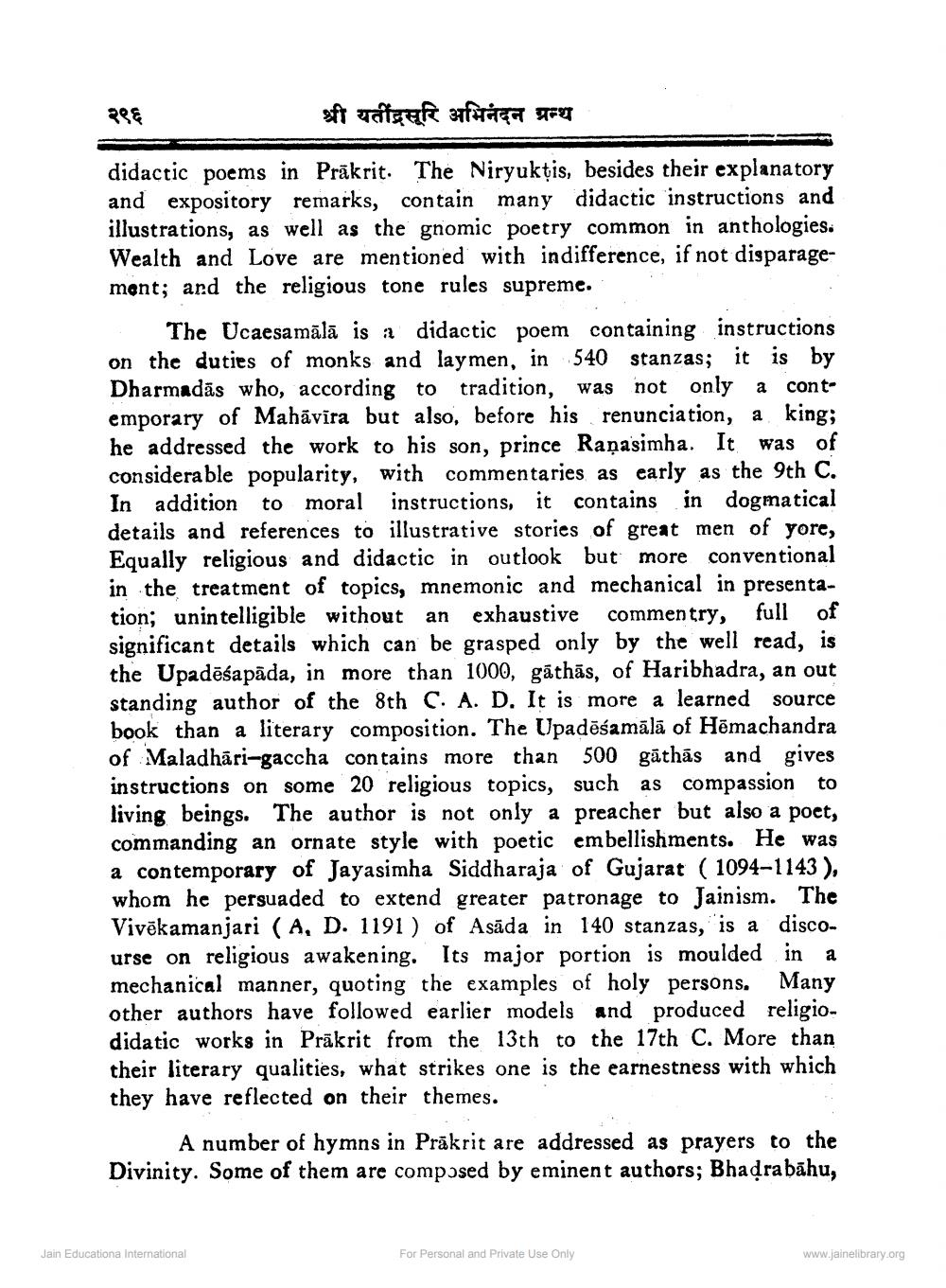________________
श्री यतींद्रसूरि अभिनंदन ग्रन्थ
didactic poems in Prākrit. The Niryuktis, besides their explanatory and expository remarks, contain many didactic instructions and illustrations, as well as the gnomic poetry common in anthologies. Wealth and Love are mentioned with indifference, if not disparagemant; and the religious tone rules supreme.
The Ucaesamālā is a didactic poem containing instructions on the duties of monks and laymen, in 540 stanzas; it is by Dharmadās who, according to tradition, was not only a contemporary of Mahāvīra but also, before his renunciation, a king; he addressed the work to his son, prince Raņasimha. It was of considerable popularity, with commentaries as early as the 9th C. In addition to moral instructions, it contains in dogmatical details and references to illustrative stories of great men of yore, Equally religious and didactic in outlook but more conventional in the treatment of topics, mnemonic and mechanical in presentation; unintelligible without an exhaustive commentry, full of significant details which can be grasped only by the well read, is the Upadēšapāda, in more than 1000, gāthās, of Haribhadra, an out standing author of the 8th C. A. D. It is more a learned source book than a literary composition. The Upadēšamālā of Hēmachandra of Maladhari-gaccha contains more than 500 gāthās and gives instructions on some 20 religious topics, such as compassion to living beings. The author is not only a preacher but also a poet, commanding an ornate style with poetic embellishments. He was a contemporary of Jayasimha Siddharaja of Gujarat ( 1094-1143), whom he persuaded to extend greater patronage to Jainism. The Vivēkamanjari ( A, D. 1191 ) of Asāda in 140 stanzas, 'is a discourse on religious awakening. Its major portion is moulded in a mechanical manner, quoting the examples of holy persons. Many other authors have followed earlier models and produced religiodidatic works in Prākrit from the 13th to the 17th C. More than their literary qualities, what strikes one is the earnestness with which they have reflected on their themes.
A number of hymns in Präkrit are addressed as prayers to the Divinity. Some of them are composed by eminent authors; Bhadrabāhu,
Jain Educationa International
For Personal and Private Use Only
www.jainelibrary.org




